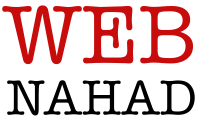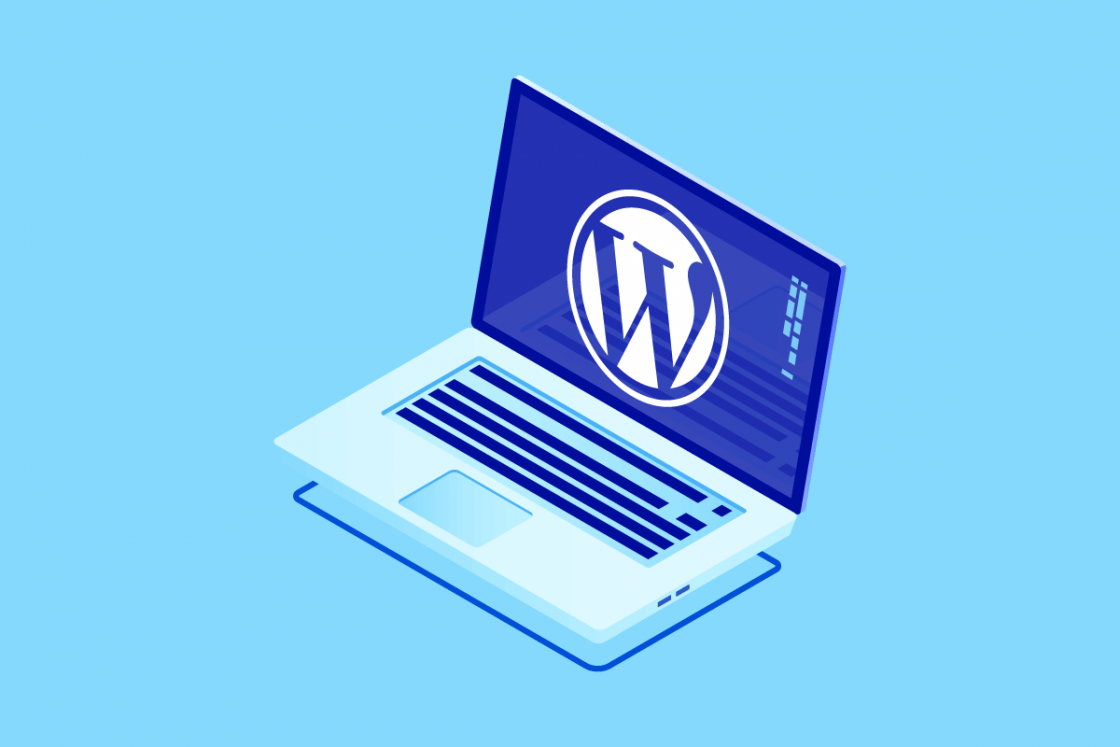First of all, What is WordPress?
WordPress is a popular open-source content management system (CMS) used to create and manage websites. It is built on PHP and uses a MySQL or MariaDB database to store website content. WordPress provides a user-friendly interface that allows individuals and businesses to create and publish web pages, blog posts, and other types of content without requiring extensive technical knowledge.
Originally developed as a blogging platform, WordPress has evolved into a versatile CMS that can power a wide range of websites, including blogs, business websites, e-commerce stores, portfolios, forums, and more. It offers a robust ecosystem of themes, plugins, and widgets, which allow users to customize the appearance and functionality of their websites.
Key features of WordPress include:
- Themes: WordPress offers a vast library of free and premium themes that determine the visual design and layout of your website. Themes can be customized or developed from scratch to match your specific requirements.
- Plugins: WordPress plugins extend the functionality of your website. There are thousands of plugins available for various purposes, such as SEO optimization, contact forms, e-commerce, social media integration, security, and more.
- Content Creation and Management: WordPress provides a user-friendly editor where you can create and format your content. It supports multimedia elements like images, videos, and audio. Content can be organized using categories and tags.
- Customization: WordPress allows you to customize your website’s appearance and functionality through themes, plugins, and custom code. You can modify the design, add features, and tailor your website to suit your needs.
- SEO-Friendly: WordPress is known for its search engine optimization (SEO) capabilities. It offers features like customizable permalinks, meta tags, XML sitemaps, and integration with SEO plugins to improve your website’s visibility in search engine results.
- User Management: WordPress enables you to manage multiple user accounts with different roles and permissions. You can assign roles such as administrator, editor, author, contributor, or subscriber, controlling access to content creation and administration tasks.
WordPress is widely used and supported by a large community of developers, designers, and users. It provides extensive documentation, forums, and resources for beginners and advanced users alike. Its flexibility, ease of use, and robust ecosystem make it a popular choice for building websites of all sizes and types.

WordPress Posts
What is a WordPress Post?
In WordPress, a post is a specific type of content that you can create and publish on your website. It is typically used for blog entries or articles that are displayed in reverse chronological order, with the most recent post appearing first.
When you create a post in WordPress, you can add various elements and information, including:
- Title: The title of your post, which is displayed prominently at the top of the post.
- Content: The main body of your post, where you can write and format your text, add images, videos, and other media.
- Categories: Categories are used to classify and organize your posts into different topics or sections of your website. You can assign one or more categories to a post.
- Tags: Tags are keywords or labels that provide additional information about the content of your post. They help in organizing and grouping related posts together based on specific topics or themes.
- Featured Image: A featured image is a representative image associated with your post that is displayed prominently on your website, often on archive pages or when the post is shared on social media.
- Excerpt: An excerpt is a brief summary or teaser of your post that appears on archive pages or in search engine results. It gives readers a preview of your post’s content.
- Publication Date: You can specify the date and time when you want your post to be published. By default, posts are published immediately, but you can also schedule them for a future date or backdate them.
- Comments: WordPress allows visitors to leave comments on your posts, fostering interaction and engagement. You can enable or disable comments for individual posts.
- Permalinks: Permalinks are the permanent URLs that point to your individual posts. They can be customized to include relevant information like post title, date, category, or other variables.
Posts in WordPress are typically displayed in a blog format, where visitors can navigate through different pages of posts, view older or newer posts, and search for specific topics. They are organized into categories and tags, making it easier for users to find and explore related content.
WordPress provides a user-friendly editor where you can create and edit your posts, and it offers various features and settings to customize the appearance, behavior, and visibility of your posts on your website.

WordPress Pages
What is a WordPress Page?
In WordPress, a page is another type of content that you can create and publish on your website. Unlike posts, which are typically used for blog entries and displayed in reverse chronological order, pages are more static and often used for creating permanent or timeless content that doesn’t change frequently.
Pages in WordPress are typically used for content such as:
- About Us: An About Us page provides information about your website, business, or organization. It may include details about your company’s history, mission, team members, and contact information.
- Contact: A Contact page usually contains a contact form, along with other contact details such as email address, phone number, and physical address. Visitors can use this page to get in touch with you.
- Services: A Services page describes the products or services offered by your business. It can include details about different service packages, pricing, and any other relevant information.
- Portfolio: A Portfolio page showcases your work, projects, or creative endeavors. It may include images, descriptions, and links to individual portfolio items.
- FAQ: A Frequently Asked Questions (FAQ) page provides answers to commonly asked questions about your business, products, or services.
- Privacy Policy and Terms of Service: These pages are important for providing legal information about your website’s privacy practices and terms of use.
When you create a page in WordPress, you can add various elements and information, including:
- Title: The title of your page, which is displayed prominently at the top of the page.
- Content: The main body of your page, where you can write and format your text, add images, videos, and other media.
- Featured Image: A featured image is an optional image associated with your page that can be displayed on your website, often as a header or thumbnail.
- Page Attributes: WordPress allows you to assign a parent page or choose a page template for your page. Parent pages can be used to create a hierarchical structure, and page templates provide different layouts or functionality for specific types of pages.
- Permalink: Permalinks are the permanent URLs that point to your individual pages. They can be customized to include relevant information like page title or other variables.
Unlike posts, pages in WordPress are not organized into categories or tags. They are typically displayed in the navigation menu or linked from other pages within your website. Pages provide a way to create static and structured content that remains accessible to visitors regardless of when it was published.

WordPress Categories
What is a WordPress Category?
In WordPress, a category is a way to classify and organize your posts into different topics or sections on your website. It is a taxonomy feature that helps you and your visitors to easily navigate and find related content based on specific subject areas.
When you create a category in WordPress, you assign it a name that represents a particular topic or theme. For example, if you have a food blog, you might create categories such as “Recipes,” “Cooking Tips,” “Restaurant Reviews,” and so on.
Each post you create can be assigned to one or more categories. By assigning categories to your posts, you are organizing them into specific topics or sections of your website. This helps visitors to browse through your content based on their interests and find posts related to a particular category.
Categories in WordPress have a hierarchical structure, which means you can create parent categories and child categories. For instance, under the “Recipes” category, you might have child categories like “Vegetarian Recipes,” “Dessert Recipes,” or “Quick and Easy Recipes.” This hierarchical arrangement allows for more granular categorization and helps to create a structured organization of your content.
WordPress provides category archives, which are pages that display a list of posts belonging to a specific category. These category archive pages can be accessed by visitors to browse through posts within a particular category.
Categories also play a role in improving the usability and SEO (Search Engine Optimization) of your website. They help search engines understand the content structure and hierarchy of your website, potentially improving the visibility of your posts in search engine results.
WordPress provides widgets and menus that allow you to display category links in your website’s sidebar, footer, or navigation menu. This makes it easier for visitors to explore content within specific categories.
By utilizing categories effectively in WordPress, you can create a logical and organized structure for your posts, making it easier for visitors to navigate your website and find relevant content based on their interests.

WordPress Tags
What is a WordPress Tag?
In WordPress, tags are a way to categorize and organize your content. They are like keywords or labels that you assign to your blog posts, articles, or other types of content on your WordPress website. Tags help you and your visitors to easily find related content based on specific topics or themes.
When you create a blog post or add content to your WordPress website, you can assign one or more tags to it. These tags can be words or phrases that are relevant to the content of the post. For example, if you have a food blog and you write a post about “Italian pasta recipes,” you can assign tags like “Italian cuisine,” “pasta,” “recipes,” and so on.
Tags are different from categories in WordPress. Categories are used for broader classifications of content, while tags are more specific and provide additional information about the post. Categories are hierarchical, meaning you can have subcategories within categories, while tags are flat and do not have a hierarchical structure.
WordPress provides a tag cloud widget that displays the most commonly used tags on your website. This widget can be placed in your website’s sidebar or footer, allowing visitors to click on a tag and see a list of posts associated with that particular tag.
Using tags in WordPress can improve the navigation and usability of your website, as visitors can easily discover related content by clicking on tags of their interest. Additionally, tags can be used by search engines to better understand the topics covered in your content, potentially improving your website’s visibility in search results.


Leave a Reply